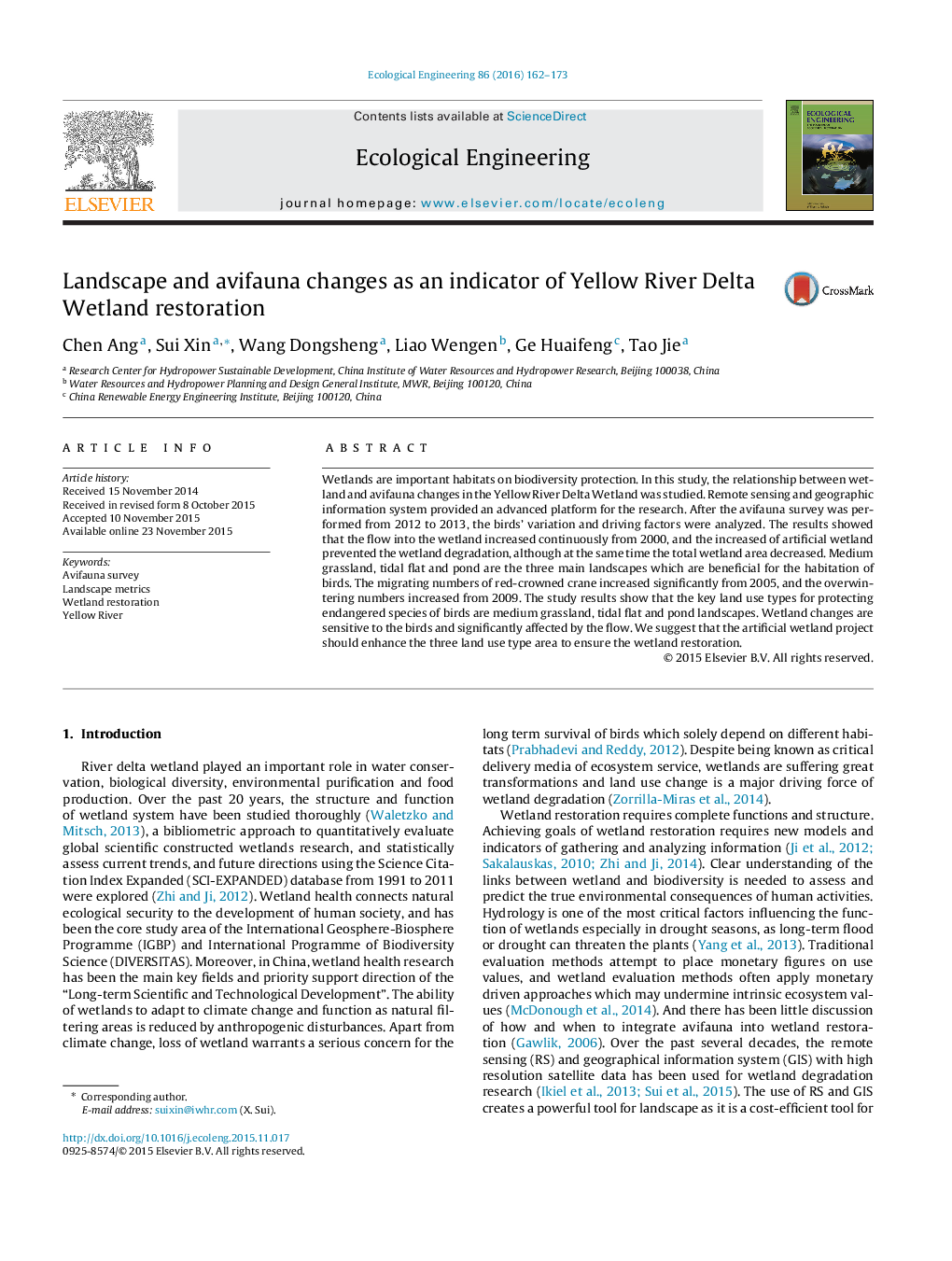| Article ID | Journal | Published Year | Pages | File Type |
|---|---|---|---|---|
| 4388927 | Ecological Engineering | 2016 | 12 Pages |
•Complete and enrich the avifauna survey, fulfill the data shortage.•Make a combination of the avifauna survey, hydrological variation and land use change.•Achieved the YRDWNR wetland restoration plan.
Wetlands are important habitats on biodiversity protection. In this study, the relationship between wetland and avifauna changes in the Yellow River Delta Wetland was studied. Remote sensing and geographic information system provided an advanced platform for the research. After the avifauna survey was performed from 2012 to 2013, the birds’ variation and driving factors were analyzed. The results showed that the flow into the wetland increased continuously from 2000, and the increased of artificial wetland prevented the wetland degradation, although at the same time the total wetland area decreased. Medium grassland, tidal flat and pond are the three main landscapes which are beneficial for the habitation of birds. The migrating numbers of red-crowned crane increased significantly from 2005, and the overwintering numbers increased from 2009. The study results show that the key land use types for protecting endangered species of birds are medium grassland, tidal flat and pond landscapes. Wetland changes are sensitive to the birds and significantly affected by the flow. We suggest that the artificial wetland project should enhance the three land use type area to ensure the wetland restoration.
